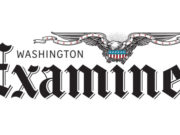This piece originally appeared in National Review on March 26, 2020.
The 2020 Democratic presidential primary began with over 20 governors, senators, congressmen, and political outsiders vying for the nomination. The field has now winnowed to two: former vice president Joe Biden, and Senator Bernie Sanders, a 30-year member of Congress.
How did such a wide-open primary come down to the oldest, whitest, and best-known candidates? Inquiring minds may begin their investigation with the party’s turn against super PACs.
Unlike regular PACs, a “super” PAC — created ten years ago this week — can accept unlimited amounts from donors. This can include contributions from unions, businesses, and nonprofit organizations, although the vast majority of super PAC money is contributed by individuals. The catch is that super PACs must spend their money on independent speech rather than contributing to candidates like traditional PACs do. Like traditional PACs and other political entities, super PACs must publicly disclose donors who give over $200.
Super PACs are the result of a unanimous ruling by the D.C. Circuit Court of Appeals, sitting en banc, ten years ago this week. Following the court’s ruling in SpeechNow.org v. Federal Election Commission, super PACs have made it easier for Americans to pool their resources to speak about candidates. This is good for democracy.
Though often derided as a nuisance, campaign advertising has been shown to make voters more informed and engaged in elections. The potential for significant independent support has also bolstered candidates who are a thorn in the side of party leaders or media elites.
From the start, however, some politicians have been trying to do away with super PACs. They’re not used to citizens having a megaphone and soapbox as big as their own. They don’t like the extra competition.
The anti-super PAC frenzy reached new heights in this year’s Democratic primary. Candidates Elizabeth Warren, Kamala Harris, Cory Booker, Kirsten Gillibrand, Julian Castro, and others effectively told their supporters to stay on the sidelines, either explicitly requesting that super PACs not support them, or blasting the groups at every turn.
As things got desperate, many of these candidates appeared to realize their mistake. They scrambled to get a new message out: I’ll take any help I can get. Joe Biden was the first to reverse his opposition to super PACs, doing so by late October. A month later, as California senator Kamala Harris’s campaign was falling apart, she, too, dropped her rejection of independent support.
The party’s backtracking on super PACs came full circle in February when Massachusetts senator Elizabeth Warren reversed course. Her early and forceful rejections of super PACs had set the tone for the field, and she went even further by making corruption and money-in-politics the top themes of her campaign. But that was when her campaign was a powerful front-runner — after poor showings in the early primary states, Warren needed a Hail Mary, and so changed her tune.
For every candidate except Biden, the reversal was too late, and the campaign could not be saved.
Warren claims she only dropped her opposition to super PACs because her opponents were accepting their help. But she surely knew that not every candidate would play by her rules. The pledges to reject super PAC support were an electoral ploy by candidates to brand themselves as cleaner than the other guy. It simply didn’t pay off.
Instead, with independent speakers on the sidelines, the candidates who entered the primary with the biggest advantages coasted. The main function of campaign spending is simply to increase name recognition — hence all those yard signs that say “Johnson for Congress” and not much else. It is not surprising that with super PACs quieted, the primary came down to the former vice president, and the only candidate who waged a major, publicity-gathering campaign in 2016.
The substantial majority of political spending in campaigns still comes from the candidates themselves. But super PACs have helped lesser-known candidates compete in races at all levels, allowed voters to hear new and diverse views (often on issues that the candidates would prefer not to discuss), and generally created a campaign system that is more fluid and open.
Fears of independent political advocacy by super PACs contributed to exactly what many Democrats had hoped to avoid: a once-diverse field reduced to a showdown between two old, white men who have held power for decades.














